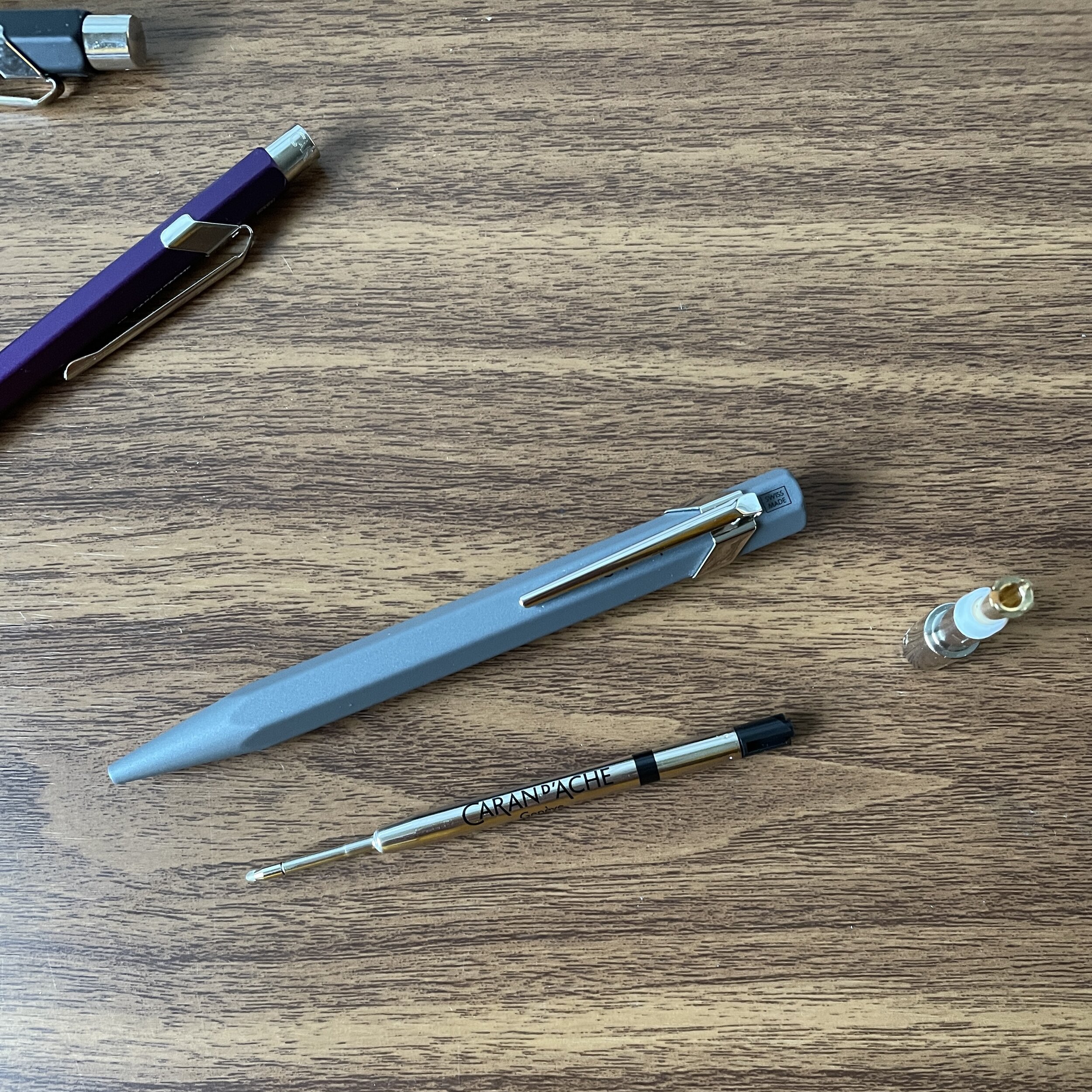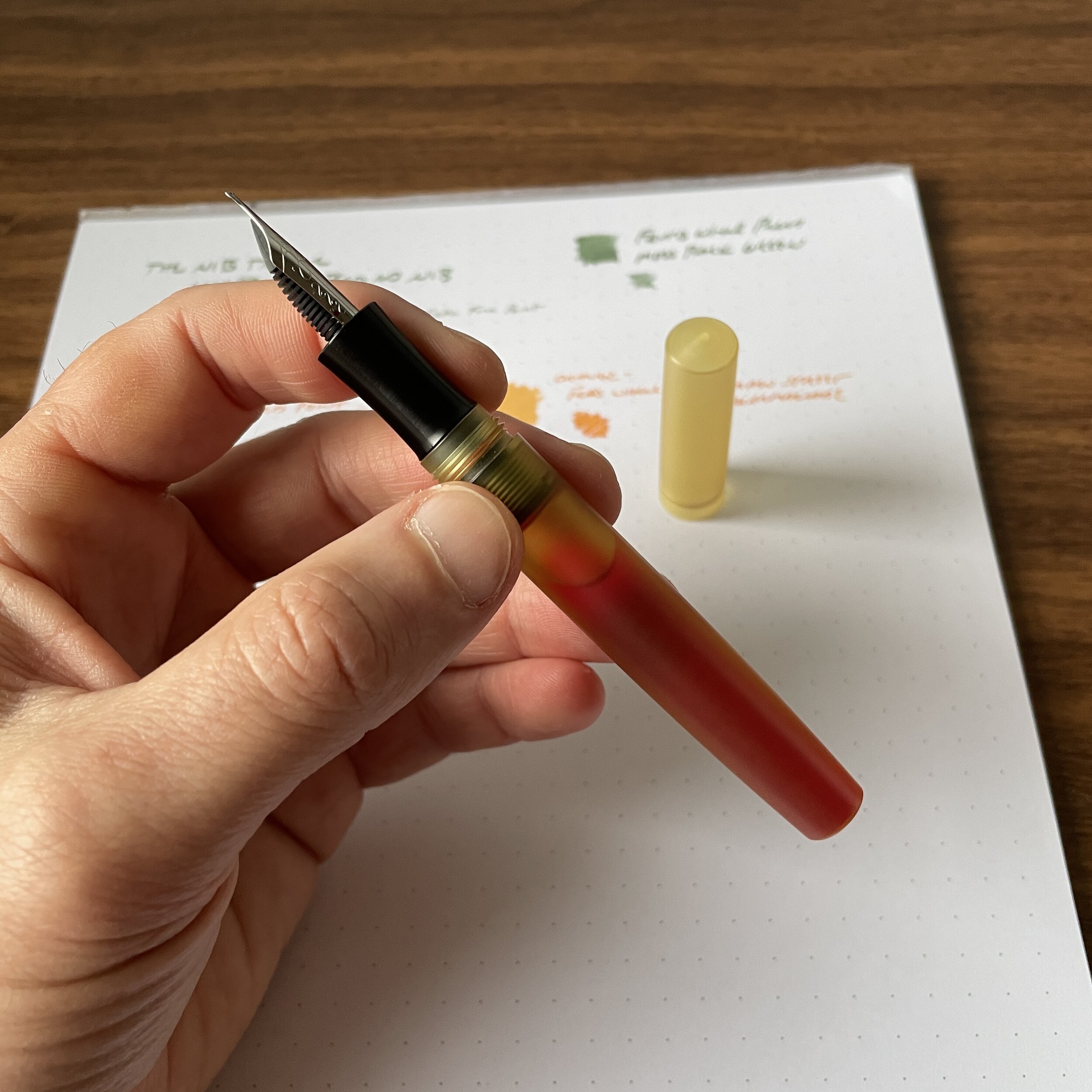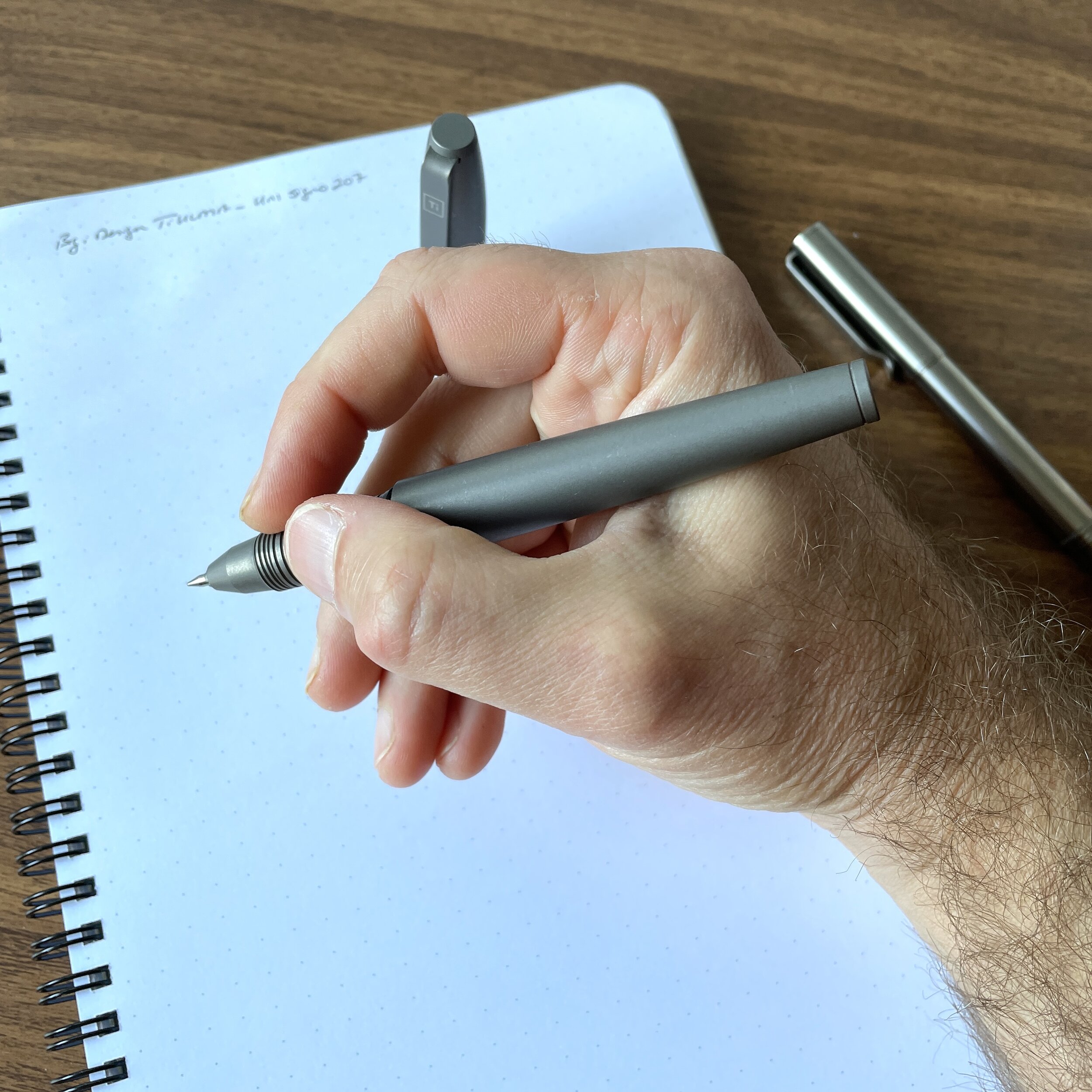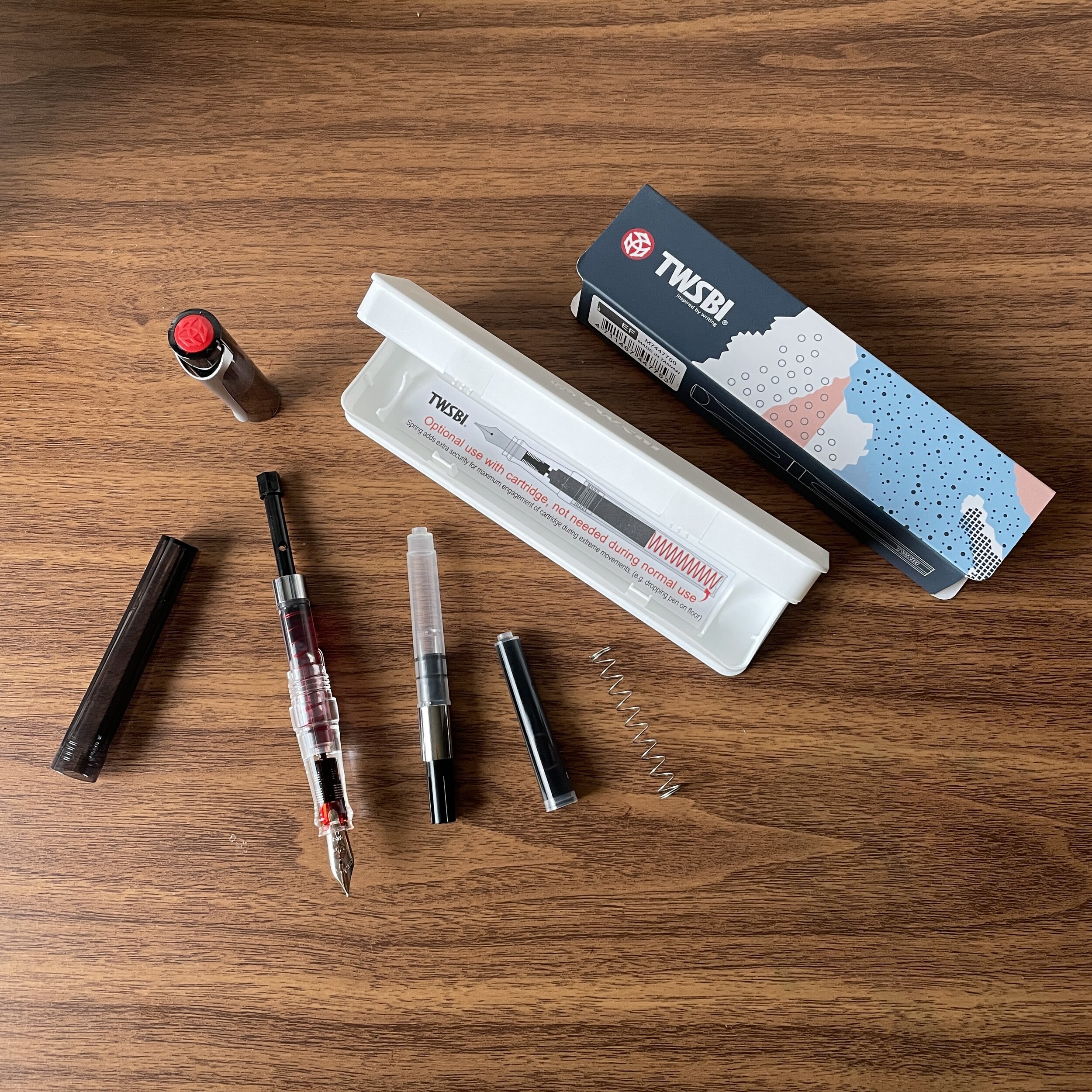From the time Taiwanese brand Opus 88 hit the shelves in the U.S., I’ve been a fan. Combining classic pen design, the still somewhat uncommon Japanese-style eyedropper filling system, and widely available, interchangeable JoWo nibs, Opus 88 has jumped to the top of the list for many of us with writing-intensive occupations who appreciate demonstrator pens that hold a large volume of ink.
The Opus 88 Omar, left, next to the Jazz in “Holiday” finish that features dark trim.
Comfortable Streamlined Cigar or Vintage-Style Flat-Top Shapes
While Opus 88 does experiment with their design profiles (i.e., see the “Flora” which is shaped like a flower vase), their most successful designs have followed traditional streamlined (i.e., cigar-shaped) and flat-top styles. For me, these comfortable, well-balanced silhouettes are what has allowed me to evolve into a fan of more oversized pens like the Omar and the Jazz (both of which are pictured here). Originally, I had limited my dabbling in Opus 88 to the smaller “Koloro” lineup, the ebonite and acrylic demonstrators that were the first models to be released stateside. Later, after overcoming my initial hesitancy toward the modern trend of oversized pens, I had the opportunity to review the Opus 88 Omar, and later picked up the Jazz, which all things considered is probably the perfect size for me personally. The Opus 88 Jazz is slightly smaller than the Omar, with proportions approximating a Montblanc Meisterstuck 146.
The Opus 88 Jazz (right) compared against a Montblanc 149 (left).
Other Key Factors That Combine to Make Opus 88 Fountain Pens Great “Workhorse Pens”
There are many brands that make excellent fountain pens in the $100-200 range, so what kicks Opus 88 into “workhorse” territory for me personally? In addition to the comfortable shape and balance discussed above, I appreciate:
Large Ink Capacity. Pretty much any Opus 88 fountain pen is the definition of an “ink tank.” For example, in the Jazz fountain pen that’s been a daily companion for the past couple of weeks, I was able to pour in a full Vanness Pens 4ml ink sample. That should last me a while. If you have a favorite ink for your daily writing that you always like to keep on hand without worrying about refilling, the Opus 88 Japanese-style eyedropper filling system is an excellent no-frills option.
Nib Versatility. Earlier this week I wrote a piece on how you can take advantage of the interchangeability of nib units to customize your pens to suit your writing preferences, and I even used Opus 88 as an example. Both the Omar and Jazz models shown here use standard JoWo No. 6 nibs, which allows you to swap out the nib on these pens with any other JoWo-compatible nib unit, including Franklin-Christoph nibs and customized third-party options from Flexible Nib Factory. Keep in mind that certain Opus 88 models do not use JoWo No. 6 nibs, including the smaller Koloro line (which uses a JoWo No. 5), and the Bela, Flora, Flow, and Opera models, which use a Bock No. 6.
Price Point. Ok, with prices on steel nib pens featuring standard JoWo and Bock nibs pushing the $200 price point in some instances, it’s refreshing to see Opus 88 at the $125 level. While inflation, import costs, and other factors outside of anyone’s control might change that in the future, it would take a big price hike to ruin the value proposition on these pens.
For further reading on what I look for in a “Workhorse Pen,” and other examples of pens that I consider recommended daily users on that level, check out my prior post titled “Picking a Workhorse: How to Choose a Fountain Pen for an Everyday Writer.”
The ability to swap nibs in Opus 88 fountain pens is a huge part of why I’ve enjoyed them so much.
Final Thoughts and Where to Buy
As I’ve become more comfortable with customizing my pens, I’ve leaned more heavily on Opus 88 in my day-to-day writing. I currently have two models inked: the Opus 88 Omar, which is paired with a broad Franklin-Christoph S.I.G. (Stub Italic Gradient) nib, and the Opus 88 Jazz (“Holiday Finish”), paired with a Platinum 3776 14k medium nib (using a custom housing from flexible nib factory). Both of the base models cost around $120, which in today’s market of ever-escalating fountain pen prices represents exceptional value.
You can find Opus 88 at most major pen retailers, though the T.G.S. Curated Shop has begun carrying certain models directly. Please stay tuned as we expand our offerings!












